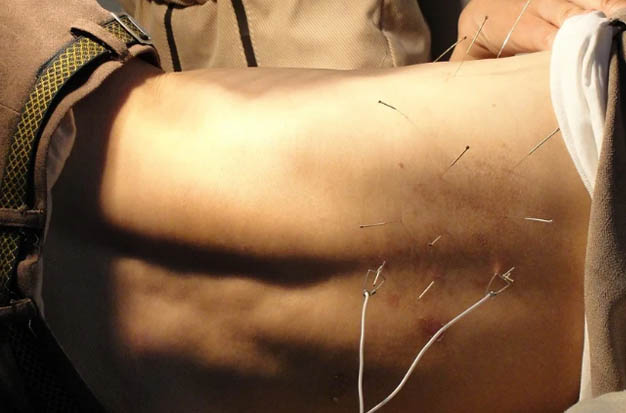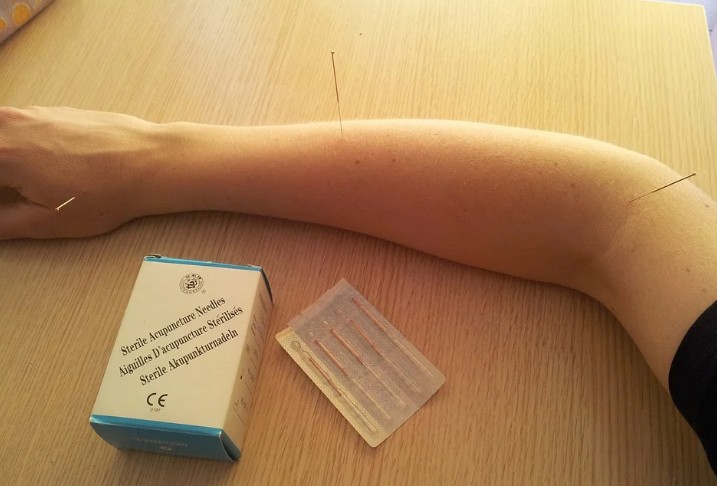
How Does Dry Needling Work – Everything You Should Know
To relieve muscle tension, lessen pain, and regain function, a technique called dry needling is used. Dry needling and acupuncture are not the same, despite their similarities in appearance. Although both treatments involve the use of needles, the training and methods used vary. A science-based treatment for pain and musculoskeletal dysfunction is dry needling.
What Is Dry Needling?
The term “dry needling” was created to distinguish it from “injection needling,” which involves injecting something into the tissue with a hypodermic syringe. Dry needling is an invasive technique in which solid filament (acupuncture) needles are introduced into the skin and tissues beneath.
With a focus on enhancing tissue healing and regaining normal tissue function, dry needling is a special technique designed to target and restore muscle function specifically. This is crucial because continued activity with weak muscles may result in more tissue damage and discomfort. Dry needling is not intended to take the place of standard medical treatments like physiotherapy or surgery. Dry needling can, however, be a powerful technique to hasten healing, pain relief, and the return of normal tissue function when combined with traditional treatment options.
It is difficult to pinpoint the precise workings of dry needling. A growing body of scientific evidence, however, supports the beneficial impact that inserting a needle has on the electrical and chemical communications that occur in our nervous system. These include reducing the release of our own pain-relieving chemicals in the brain and reducing the transmission of pain signals to the spinal cord. With public hospital systems now directly funding its use, dry needling’s ability to relieve pain is gaining significant support in mainstream Western medicine.
How Does It Work?
Physical therapists, chiropractors, and medical professionals can treat patients with dry needling, which is a painless procedure.
Sterile, disposable needles are inserted into or close to muscle trigger points by the therapist or doctor. Diagnoses are made before any treatment for these trigger points.
Commonly referred to as a “muscle knot”, a trigger point is a tight band in a muscle fiber that can cause pain, restrict range of motion, and disrupt normal function. An area may contain a number of trigger points, and if they are not treated, they will only worsen over time.
The majority of the time, treatments are not painful. Dry needling uses extremely thin needles, which are eight times smaller than those used for injections and vaccinations. These solid needles stimulate muscle tissue rather than inject fluid.
Depending on the type of pain being treated, the needle’s depth and duration should be adjusted. In the tissue, needles may remain for a few seconds or for several minutes.

How Does Dry Needling Treat Persistent Muscle Tightness?
It causes a skeletal muscle’s trigger point to become active. You might refer to it as a knot, and it can hurt more than just the muscle where it is located. Myofascial pain syndrome is another name for a trigger point. Trigger points, which are constricted bands of skeletal muscle within larger muscle groups, can be painful to touch and may radiate pain to other parts of your body.
Your therapist is using dry needling as a part of a larger treatment plan to try and release the trigger point, alleviating pain and/or enhancing your range of motion. In addition to easing pain, dry needling can ease muscle tension. A twitch that happens when the needle is inserted into the trigger point may be an indication that the therapy is having an effect.
Why Try Dry Needling?
This method addresses a variety of musculoskeletal problems while reducing muscle pain and myofascial pain (pain in connective tissue, or fascia).
Treatments involving dry needling help to improve blood flow to the area, lower inflammation, and reduce localized tissue tension. As a result, there is a decrease in muscle pain and spasms, proper function is promoted, movement problems are fixed, and range of motion is restored.
It provides a non-drug option for treating and controlling pain. For people who want to consider other options before having surgery, it might in some circumstances offer a nonsurgical treatment option.
Is Dry Needling Safe?
A very safe procedure is dry needling. Only individually packaged, single-use, sterile needles are used in the clinic because we are trained to use a “clean” technique there. The needles are very small (.16-.30mm), and bleeding or bruising at the site of insertion is extremely rare.
Several hours to two days of soreness in the treated area and the referral zone are commonly reported by patients. The most common and dangerous of the side effects, which are extremely uncommon, is pneumothorax. Here, the lung is punctured by a needle, causing a full or partial collapse. This typically occurs as a result of improper practitioner technique when a needle is inserted into the Trapezius muscle in a particular way and too deeply. The majority of physiotherapists have a thorough understanding of the relevant anatomy and dry needling technique, making the practice extremely safe. Nevertheless, many physiotherapists will not dry needle muscles of the thorax that may be deep and close to the inflated lung.
Dry Needles: Where Did They Originate?
Although dry needling has been practiced since the 1940s, it only really took off in the early 2000s. In the 1940s, Dr Janet Travell introduced the term “dry needling”- using a hypodermic needle without injecting any substances. Dr. Karel Lewit first reported pain relief from stimulating trigger points with hypodermic and acupuncture needles in 1979. In 1989, Drs. Chan Gunn and Peter Baldry both renounced the hypodermic needle and embraced the modern acupuncture needle.
An acupuncture needle is inserted into the muscle trigger point using the dry needling technique. With an approximate 0.3 millimeter diameter, these needles are incredibly thin. The muscle twitches as a result of the deep injection of the needle. This is the muscle rapidly contracting and relaxing. You may experience the area of pain referral as well as a sore muscle as a result. Commonly you may feel a slight increase in muscle pain for the next 24-36 hours as the muscle continues to release. This is in comparison to Traditional Chinese Medicine Acupuncture which is based on inserting the needles into specific points in the body to allow the free flow of energy (known as “Qi”) through the body. The harmony between Yin and Yang is made possible by the free flow of Qi.
Conclusion
Last but not least, there are things you need to do outside of your physiotherapy session in order to benefit from the dry needling as much as possible. Stretching and using warmth (such as a heat pack) are included in this. The next time your muscles feel sore or tense, talk to your local physiotherapist to see if dry needling might be right for you. It’s also important to strengthen the affected muscle and maintain good posture to prevent the trigger points from returning.





Average Rating